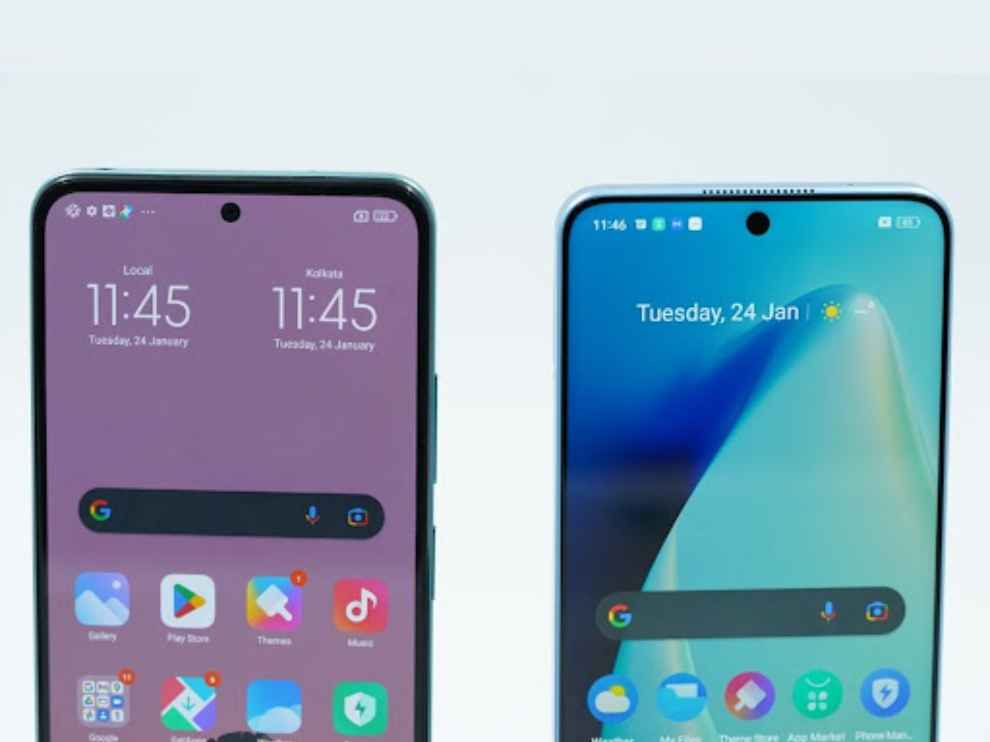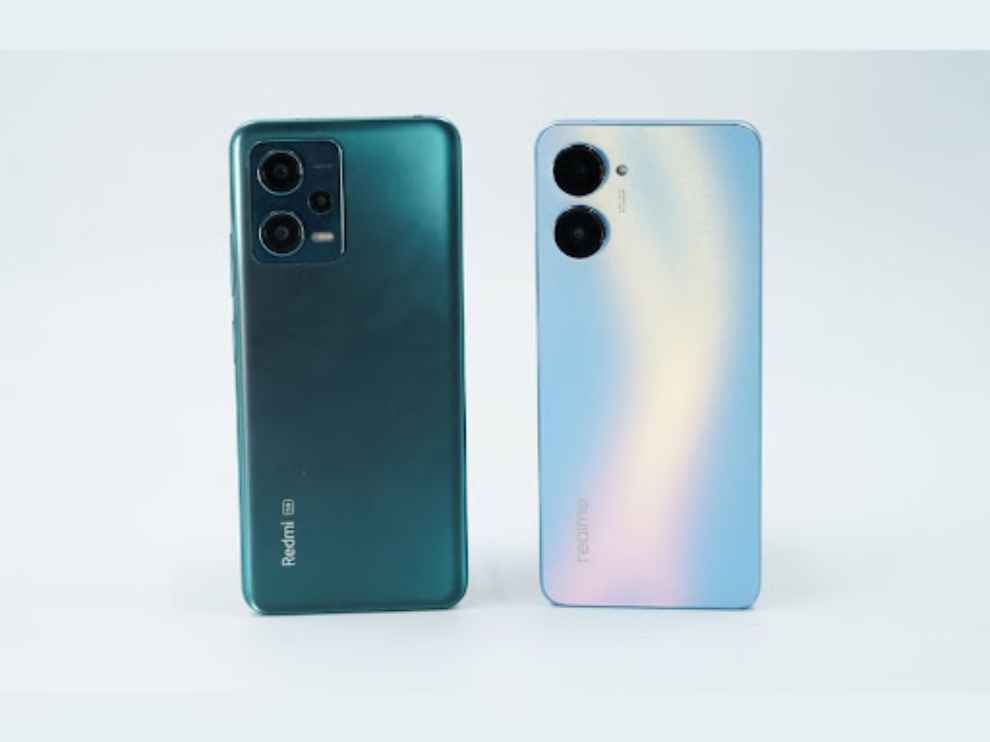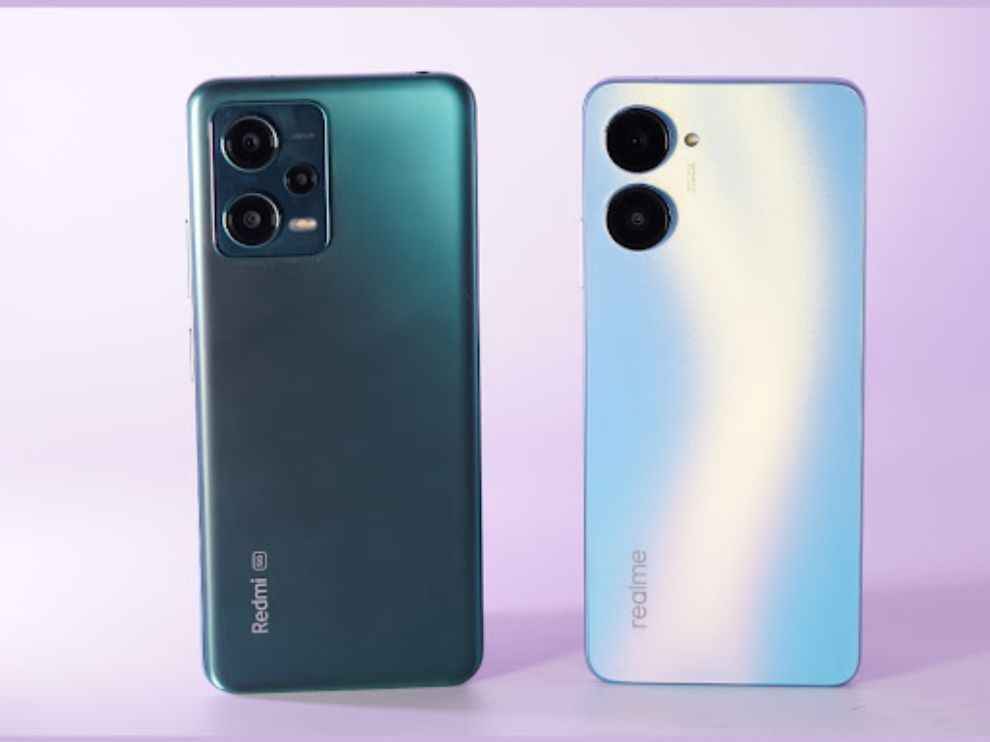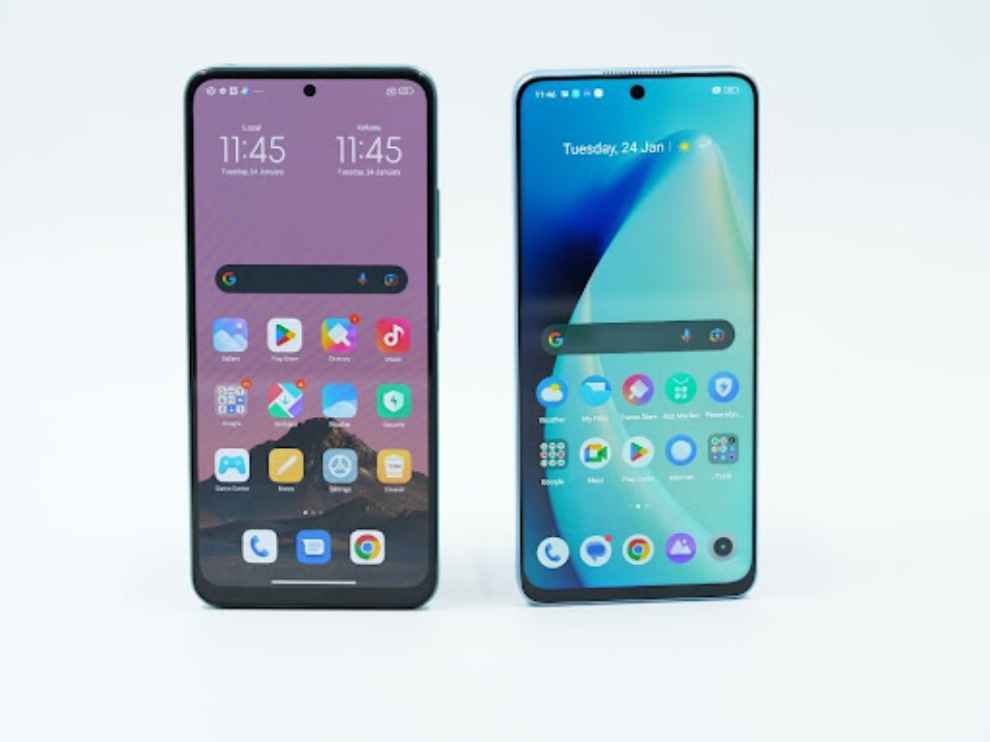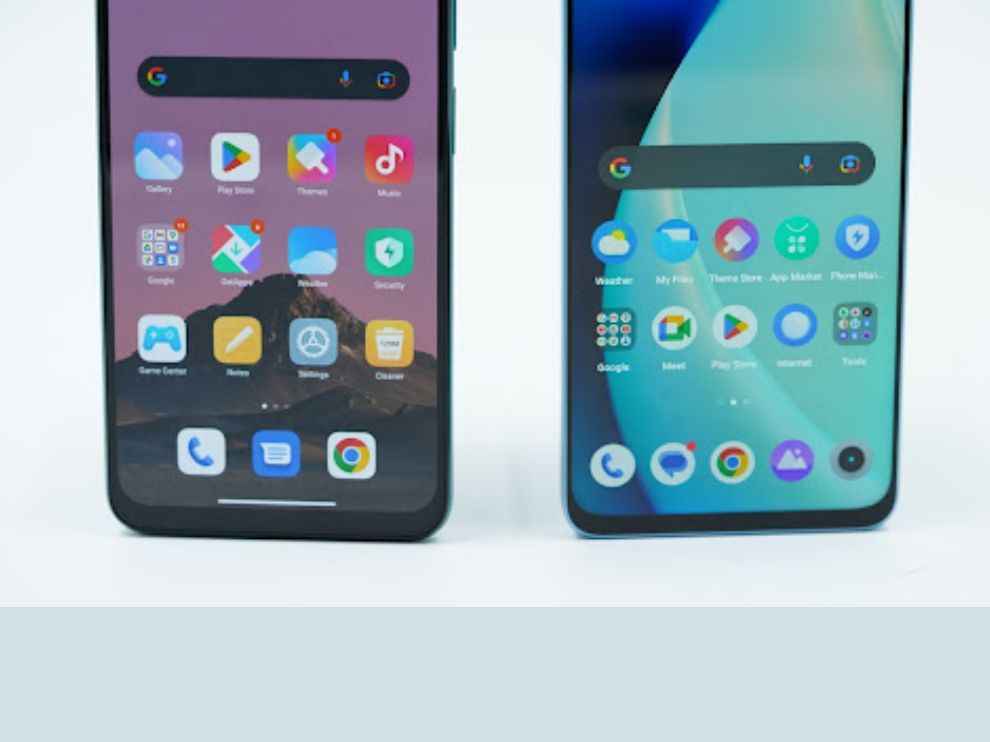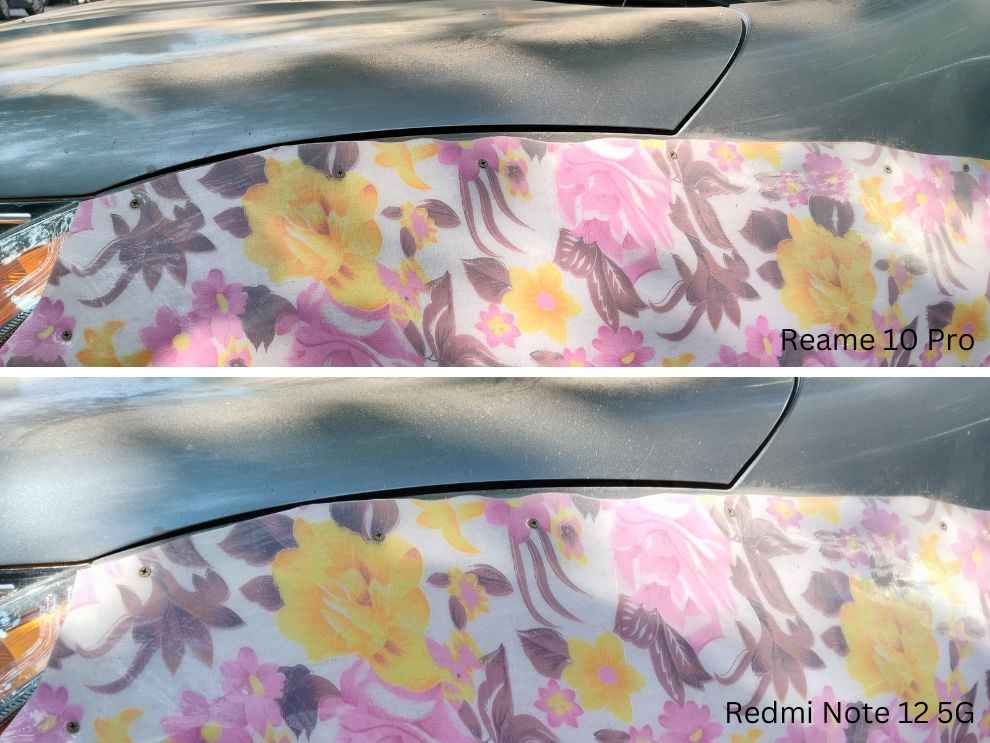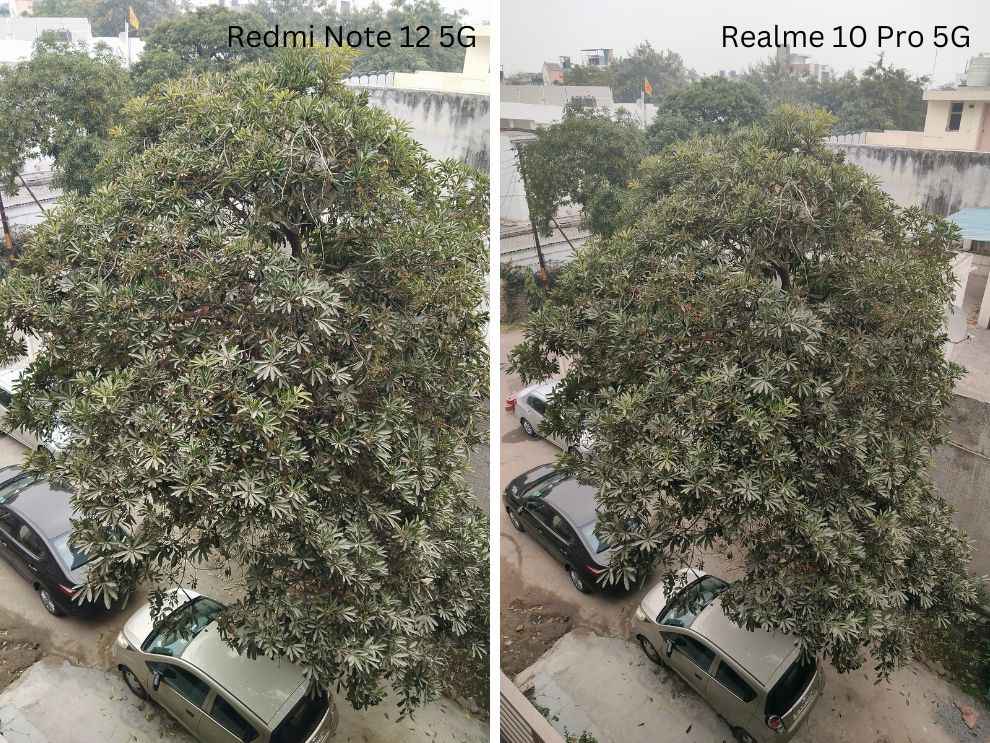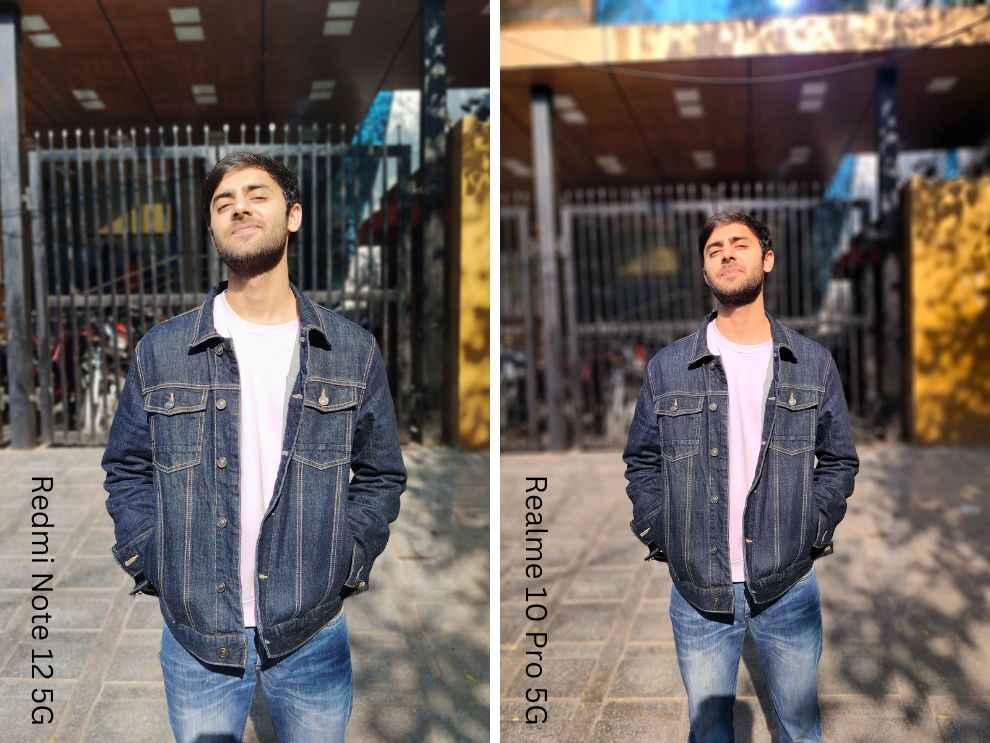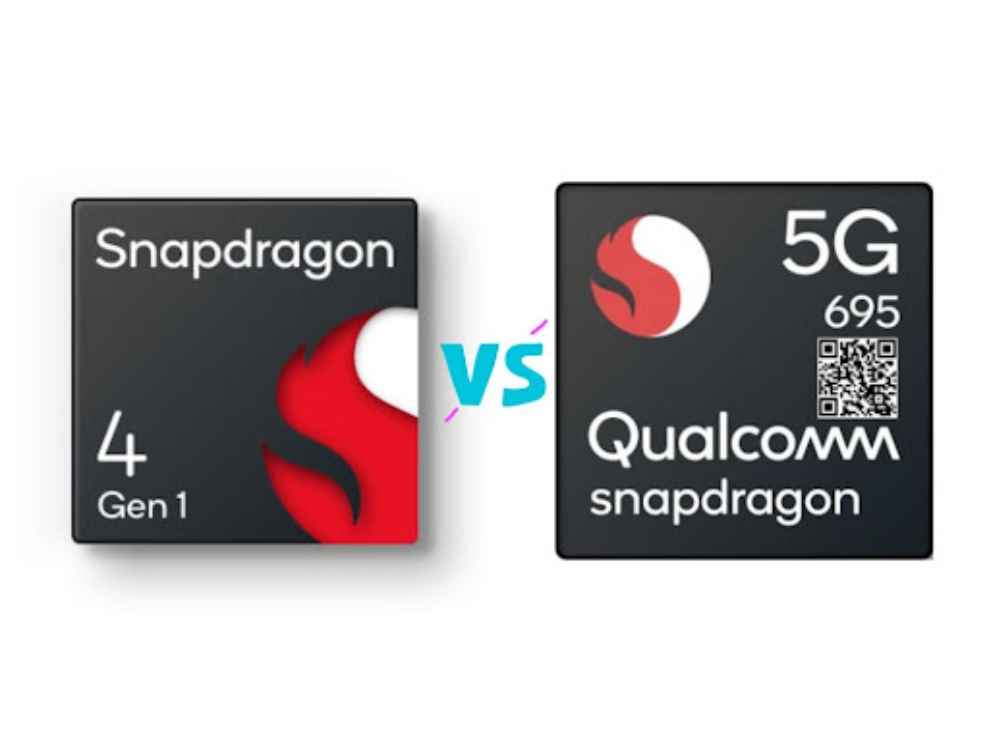Redmi Note 12 5G vs Realme 10 Pro 5G: Budget battle of 2023 starts off with a bang
Redmi Note 12 5G and Realme 10 Pro 5G are two of the first popular budget 5G smartphones of 2023
Both the Redmi Note 12 5G and Realme 10 Pro 5G come with Qualcomm Snapdragon SoCs
The display on the Redmi Note 12 5G is an AMOLED panel, while the Realme 10 Pro comes with an LCD display
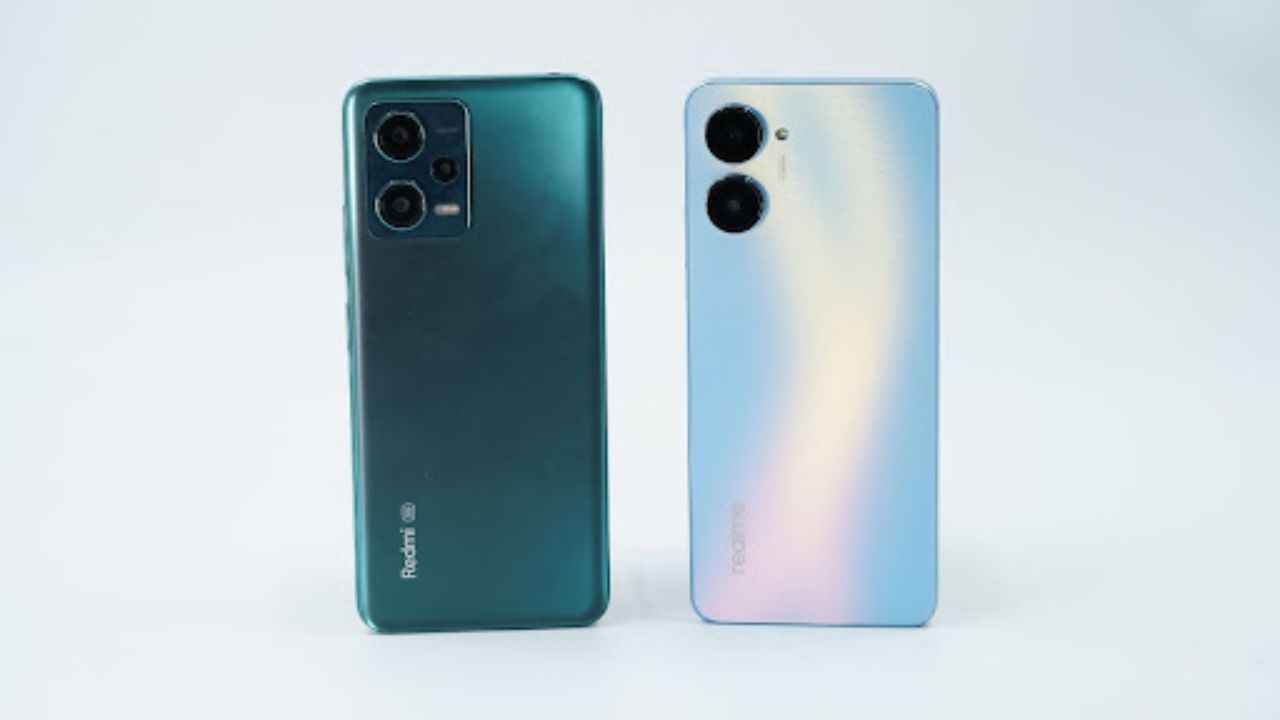
2023 has just started and the number of launches one after the other is setting the tone around what's to come in the smartphone market. In January alone, we have seen launches across categories from various brands like Xiaomi, Realme, Tecno, Infinix, iQoo, and more, with the OnePlus 11 and Samsung’s Galaxy S23 series right around the corner. While each segment demands equal attention, in a market like India, the budget segment is arguably the hottest. With 5G starting to roll out to almost all Airtel and Jio users (sorry Vi), there is a new demand for budget-centric 5G smartphones. Luckily, the first month of 2023 itself gave us one of the hottest head-to-head in this segment for the year – Redmi Note 12 5G vs Realme 10 Pro 5G.
 Survey
SurveyWhile the Realme 10 Pro 5G came in December 2022, it is Realme's big bet in the budget 5G segment for this year. However, the Realme 10 Pro 5G faced tough competition the moment we flipped our calendars. The phone we are talking about here is the Redmi Note 12 5G, which comes from a family of highly-successful budget smartphones in India. Does the Realme 10 Pro 5G, with its striking design and 108-megapixel cameras have the ability to take on the Redmi Note 12 5G that comes from a lineage of successful budget phones? Let's find out.
Redmi Note 12 5G vs Realme 10 Pro: Design
Starting with one of the most subjective elements of all, design. The design of the Redmi Note 12 5G is very basic, in line with the company’s design language for the Redmi Note series. There is a rectangular camera module on the top left corner of the polycarbonate back panel. The colour we have on our person is a shade of olive green, which looks quite classy. There is Redmi branding in the bottom left corner and the back panel curves around the edges. Up front, the Redmi Note 12 5G has a basic hole-punch display. The bezels are slim, but the chin on the smartphone is rather thick compared to some other smartphones of today.
The Realme 10 Pro 5G, on the other hand, takes a completely different approach with its design. The smartphone has a proper flat-edged design both up front and on the back. The edges are also completely flat. The back panel has a matte-like finish, but the Nebula Blue colour here doesn’t look as classy as the Redmi Note 12 5G in Frosted Green. The back panel is absolutely flat, and there is no camera module as such. The two shooters and the LED flash module erect out of the back panel itself. The volume rockers and power buttons are placed on the right side of the frame. Same as the Redmi Note 12 5G. Up front as well, things are new. Realme has put a “bezel-less” LCD display with next to no bezels and a slight chin at the bottom. Up front, the thing looks almost unreal, with the almost bezel-less design, but the chin on the bottom slightly hinders the whole full-screen feel that Realme was going for. The smartphone is also super lightweight just like its competitor, with both weighing the same 189 grams each.
Coming to size, both the Redmi Note 12 5G and the Realme 10 Pro 5G are similar in size. While the Realme 10 Pro has a marginally bigger 6.72-inch display as compared to the 6.67-inch display of the Redmi Note 12 5G, the Redmi Note 12 5G is bigger in overall dimensions – both in terms of how tall it is and how wide it is. This is mainly because of the Reame 10 Pro’s bezel-less display that leaves next-to-no borders except for the chin on the bottom of the front panel. One thing to mention here is how Realme has been able to make the bezels so thin with an LCD display is impressive, since LCDs are not as flexible as AMOLED panel.
Redmi Note 12 5G vs Realme 10 Pro: Performance
In terms of performance, both the Redmi Note 12 5G and the Realme 10 Pro 5G come with Qualcomm chipsets. While the Redmi Note 12 5G is powered by the newer Snapdragon 4 Gen 1 chipset, the Realme 10 Pro 5G comes with a Snapdragon 695 SoC. In terms of RAM, the Realme 10 Pro 5G gives you more RAM with up to 8GB, while the Redmi Note 12 5G maxes out at 6GB of RAM. Both smartphones give you the option of virtual RAM expansion, but here also, the Realme 10 Pro 5G offers more, with up to 8GB expandable RAM, while the Redmi Note 12 5G allows you to expand it by 5GB.
Both the Redmi Note 12 5G and the Realme 10 Pro 5G run on Qualcomm’s 6nm chips. However, both smartphones perform quite differently even if we don’t factor in the more RAM in Realme 10 Pro 5G. In performance-based benchmarks like AnTuTu, GeekBench, PCMark Work, Gamebench and more, the Realme 10 Pro 5G scored more than the Redmi Note 12 5G. On AnTuTu, the Realme 10 Pro 5G scored about 415,566 points, while the Redmi Note 12 5G scored 363,836 points. A difference of more than 50,000 points. On Geekbench, however, the difference was slightly less. The Realme 10 Pro 5G scored 683 points in the single-core test and 2016 points in the multi-core test. The Redmi Note 12 5G, on the other hand, scored 610 points in the single-core test, and 1,849 points in the multi-core test. Further, in the PC Mark Work as well, the Realme 10 Pro emerged winner with about 477 points above the Redmi Note 12 5G’s score of 10,169 points.
While the benchmark scores aren’t miles apart from each other, the Redmi Note 12 5G wasn’t able to run certain GPU-based benchmarks like 3D Mark and GFX Bench. We are not sure if these have been blacklisted by Xiaomi or if we encountered an issue, but we weren’t able to put the Redmi Note 12 5G head-to-head against the Realme 10 Pro 5G when it comes to these GPU tests. On Gamebench, the Realme 10 Pro 5G showed a better frame rate and stability as compared to the Redmi Note 12 5G.
During your average everyday use, the Realme 10 Pro 5G offers faster performance. I found the app loading to be slightly quicker as compared to the Redmi Note 12 5G. Now, this difference is only marginal and makes no impact if looking at it from a daily user’s perspective, but head-to-head, the Realme 10 Pro 5G opens apps and switches between them more quicker. This is mainly because of the higher RAM on the Realme 10 Pro 5G.
During gaming as well, the two smartphones echoed their respective benchmark performances. The gaming experience on the Realme 10 Pro 5G is much better. The graphic rendering is smooth, and there are pretty much no lags or fame drops even during long gaming sessions. This is where the higher clock speed of the Snapdragon 695 SoC’s big cores comes into play – 2.2GHz vs the 2.0GHz clock speed of the Snapdragon 4 Gen 1. The Redmi Note 12 5G, on the other hand, didn't render graphics as smoothly and we did experience frame drops or lags at certain points. Now, while the Realme 10 Pro 5G offers a better gaming experience, the smartphone heats up more than the Redmi Note 12 5G. After a 15-20 minute gaming session of Call of Duty Mobile, the Realme felt quite hot, while the Redmi Note 12 5G managed thermals much better.
Redmi Note 12 5G vs Realme 10 Pro 5G: Battery
Coming to the battery, this is where the Redmi Note 12 5G showed better results, barring a couple of exceptions here and there. Both the Redmi Note 12 5G and the Realme 10 Pro 5G come with 5,000mAh batteries and both support 33W fast charging. On paper, things are even. However, when it comes to the actual battery experience, the Redmi Note 12 5G gave us slightly better battery life. During our time with the two devices, the Redmi Note 12 5G was able to give more on-screen time in one battery cycle as compared to the Realme 10 Pro, but the difference wasn’t too vast.
During other tests as well, the Redmi Note 12 5G showed better efficiency as compared to its rival. Watching 30 minutes of YouTube video on the maximum setting for 30 minutes only drained 4 percent of the Redmi Note 12 5G’s battery life, as against the 6 percent drop for the Realme 10 Pro. Further, a 15-minute gaming session on Call of Duty: Mobile drained only 5 percent of the Redmi Note 12 5G’s battery, while the same drained 9 percent of the Realme 10 Pro’s battery. While in most things the Redmi Note 12 5G’s efficiency was better, using GPS navigation on the Redmi Note 12 5G for one hour surprisingly drained twice the amount of battery that it did on the Realme 10 Pro 5G. Charging speeds on the two are also pretty much the same, with the Realme 10 Pro 5G charging from 0 to 100 in just 65 minutes as against the Redmi Note 12 5G, which took 67 minutes to charge from 0 to 100.
Redmi Note 12 5G vs Realme 10 Pro 5G: Display
The display tech on both the Redmi Note 12 5G and Realme 10 Pro 5G are different from each other, but the resolution and refresh rate remain the same. The Redmi Note 12 5G comes with an AMOLED display, while the Realme 10 Pro 5G comes with an IPS LCD display. While the 1080 x 2400 pixels resolution on the Redmi Note 12 5G and the Realme 10 Pro is the same, the AMOLED panel on the Redmi Note 12 5G feels far superior in terms of sharpness and colour accuracy. The Redmi Note 12’s display also feels more smooth, despite both phones having the same 120Hz refresh rate.
Not to take away from the Realme 10 Pro’s LCD display, which also feels very premium going by LCD standards. Looking at these displays side-by-side, the Redmi Note 12 5G’s display feels more rich overall. The colours are denser and the detail is much better, thanks to the AMOLED panel that Xiaomi has used. Now, while the difference between these two displays is quite evident, the LCD on the Realme is also brilliant in terms of details and quality, if we go by LCD standards. Many screens on the smartphone seemed similar, but obviously, the Redmi Note 12 5G’s display just feels more vibrant.
In terms of touch response as well, the Redmi Note 12 5G felt slicker. Swiping between screens took less effort on the Redmi Note 12 5G, as compared to the Realme 10 Pro 5G. Further, I also experienced accidental touches on the Realme 10 Pro a few times, but not so much on the Redmi Note 12 5G.
Coming to brightness, here also, the Redmi Note 12 5G was a clear winner. The smartphone’s AMOLED display is much brighter than the LCD panel on the Realme 10 Pro 5G. In our Lux Meter test, the Redmi Note 12 5G showed a peak brightness of 816 nits, as compared to the Realme 10 Pro’s 658 nits tested peak brightness. It is important to note here that the Realme 10 Pro 5G came very close to the claimed peak brightness of 680 nits. The Redmi Note 12 5G, on the other hand, has a claimed peak brightness of 1200 nits, which is farther from the tested brightness.
Overall, the Redmi Note 12 5G easily takes the lead over its most direct competitor. Having an AMOLED display doesn’t just give you a better quality image, it’s also more efficient and consumes less battery as compared to an LCD panel.
Redmi Note 12 5G vs Realme 10 Pro 5G: Camera
Another subjective thing, is cameras. Here also, the Redmi Note 12 5G and Realme 10 Pro 5G offer different things. While the Realme 10 Pro 5G offers a dual rear camera, the Redmi Note 12 5G comes with a triple rear camera setup. However, the primary shooter on the Realme 10 Pro 5G uses a 108-megapixel sensor, paired with a 2-megapixel depth sensor or a portrait lens. The Redmi Note 12 5G, on the other hand, has a 48-megapixel primary shooter, an 8-megapixel ultra-wide angle lens, and a 2-megapixel macro shooter.
In terms of performance, however, the 48-megapixel sensor on the Redmi Note 12 5G stands tall against the 108-megapixel shooter of the Realme 10 Pro 5G. While the Realme 10 Pro is able to capture more detail in most conditions, the Redmi Note 12 5G’s images look more vibrant, thanks to the stronger post-processing. The colour contrast on images from the Redmi Note 12 5G is usually better, as compared to the more true-to-life colour tone on the images from the Realme 10 Pro’s camera. In terms of details, however, the Realme 10 Pro 5G’s 108-megapixel sensor helps the smartphone capture more details and users are able to see the finer details clearly in the images from the Realme 10 Pro’s camera. As you can see in this image of a car’s unusual quarter panel, the minor dust on the bonnet is only visible in the image from the Realme 10 Pro’s camera, while the image out of the Redmi Note 12 5G looks more vibrant and gives a better, more rich tone to the colours.
Not to mention, the Realme 10 Pro 5G also tries to enhance the colours on pictures, but mostly blows it up, resulting in a weird mix of hues that makes the image look rather dull or at times. In landscape shots, however, the Realme 10 Pro 5G’s camera does a much better job overall. The smartphone keeps the details mostly intact, and the colours are also pretty good. Here also, the Redmi does well, but not as well as the Realme 10 Pro 5G. Here is a shot of a tree from above to give you a better perspective at wider or more than one subject.
Now, the amount of detail in the Realme 10 Pro 5G is mostly present in the primary shooter. The portrait lens doesn’t have as much detail, but the portraits out of the Realme 10 Pro 5G’s camera are pretty decent. Here also, the colour management isn’t great and the edge detection is also not as good as the Redmi Note 12 5G. On the Redmi Note 12 5G, the edge detection is better and background blur is pretty good. On the Realme, on the other hand, the colours look more rich and the images don't lose colour.
Another area where the Redmi Note 12 5G takes the pole is the presence of a wide-angle shooter. The images out of the wide-angle lens do lack detail and sharpness, but just having a proper wide-angle shooter should give Redmi the points here.
Redmi Note 12 5G vs Realme 10 Pro 5G: Verdict
So that was all for the first hot budget 5G battle of 2023 – Redmi Note 12 5G vs the Realme 10 Pro. Now, both these smartphones have their own strengths and weaknesses. The Realme 10 Pro offers a more striking design and offers better overall performance, the Redmi Note 12 5G, on the other hand, takes home the crown for the better display, camera, and battery. Now, the aim for this was to see which of the two budget 5G smartphones is the better device. After a side-by-side test, it seems that both smartphones don’t disappoint in anything that an under-Rs 20,000 smartphone buyer may expect.
However, one has to be a winner. And as tough as it is to give a verdict in this tight competition, the Redmi Note 12 5G seems like a better overall product in this battle. While the Realme 10 Pro 5G offers a better gaming experience, the Redmi Note 12 5G is an overall better device, despite the relatively underwhelming gaming performance or the basic design. We get a better, more premium display, a better set of cameras, and better battery backup. Pair all this with the Redmi Note series’ popularity in India, and you have a winner at hand unless you’re buying the smartphone for gaming.
Snapdragon 695 vs Snapdragon 4 Gen 1: Better budget chip?
This comparison also throws light on the difference between Qualcomm’s two popular budget 5G chipsets – the Snapdragon 695 and the Snapdragon 4 Gen 1. Both the chips are built on a similar 6nm process with a similar architecture. The Snapdragon 695 has two Cortex-A78 performance cores clocked at 2.2GHz and six Cortex-A55 efficiency cores clocked at 1.7GHz. The Snapdragon 4 Gen 1, on the other hand, comes with two Cortex A78 cores clocked at 2GHz and six efficiency cores clocked at 1.8GHz.
As we saw in our comparison, the Snapdragon 695, which is an older chipset from the higher-end Snapdragon 6-series, offers better overall performance, while the newer and lower-end Snapdragon 4 Gen 1 offers better efficiency, without being too far away from the 695 in terms of performance. One thing is for certain, Qualcomm’s entry-level Snapdragon 4-series chips are now almost as powerful as a Snapdragon 6-series chip from 11 months ago.
